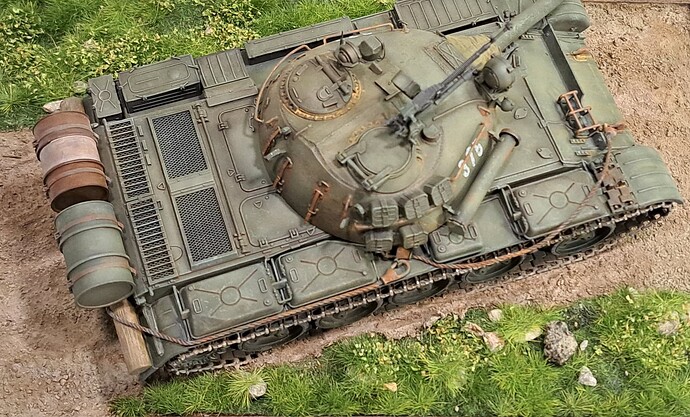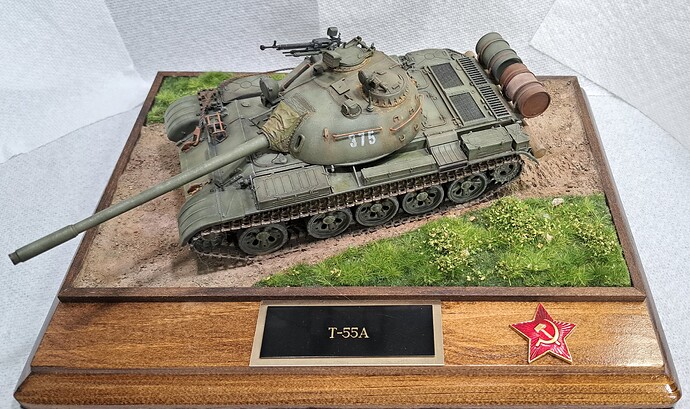I generally incorporate finishing stages into the construction stages. Sometimes the only way to have access to certain areas is when you’re building them, so advance planning and anticipation of how the progress of the model will limit, or even prohibit reaching into areas guides my approach.
For instance, right now I’m building a Trumpeter Scud missile launcher. The way the kit is designed, once the upper hull has been attached to the lower, the suspension and tracks must be completely assembled. However, the fenders which are molded attached to the upper hull will prevent reaching the upper tracks and the complexity of the suspension means that painting the various sub-assemblies (wheels, tracks, lower hull sides, etc.) must be done before they’re permanently assembled.
The crew cab is a large, fairly open structure with lots of visible interior details which includes a floor “module” that fits into the lower hull and a firewall that establishes the lower hull wall geometry. All of this must also be completed and painted before the upper and lower hulls can be joined.
At this moment, I have the entire lower hull and suspension dry-fitted and ready to paint. All of the wheels are loose, and the tracks (glued indy link-to-link type) are made into two runs for each side. I have perhaps two dozen or so interior parts and subassemblies that are also all loose, but dry-fitted.
All of this work is just about ready to start painting and will also need to be final assembled in stages. Only once this is all done will the upper and lower hulls be ready to actually join together and the rest of the kit assembled. There’s no point right now in doing any of the external details for the upper hull and superstructure until all of this “foundation” work has been completed.
I have actually written out a plan for the finishing and intermediate construction stages just to be sure that I don’t forget something and to make the sequence as logical and efficient as possible. This will start off with using acrylic texture gel medium to add 3D earth textures to the lower hull and suspension and culminate with attaching the upper and lower hulls together at which time the lower hull, suspension and tracks along with the interior of the crew cab will be completely finished and weathered.
This is a bit of an extreme case, but more so really just because the model is so large, and I’m doing a lot of extra work on the visible crew cab interior. Still, the overall approach, incorporating finishing and construction stages together, is pretty normal for me.

